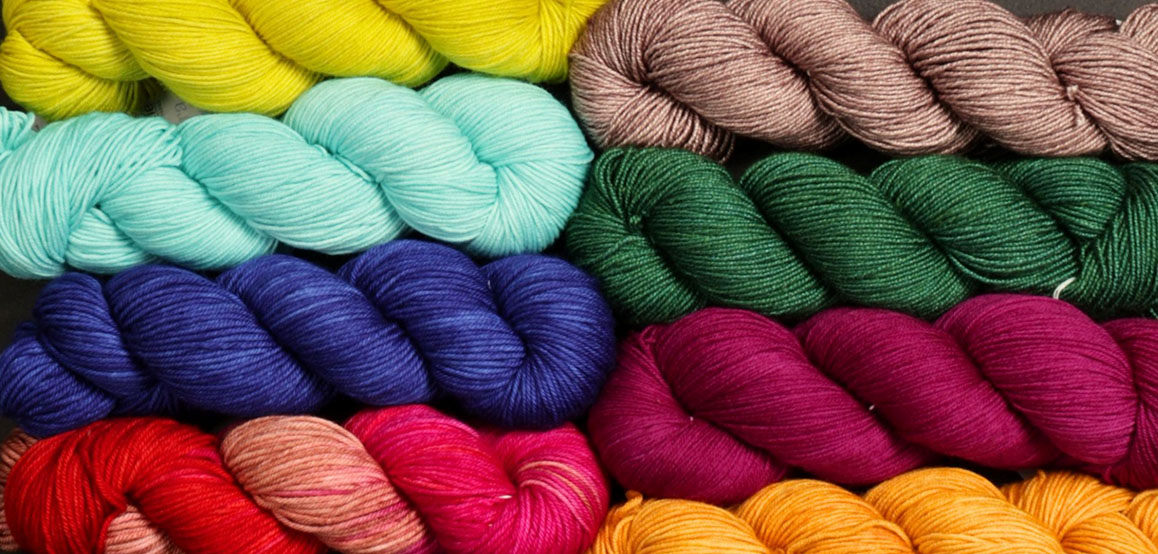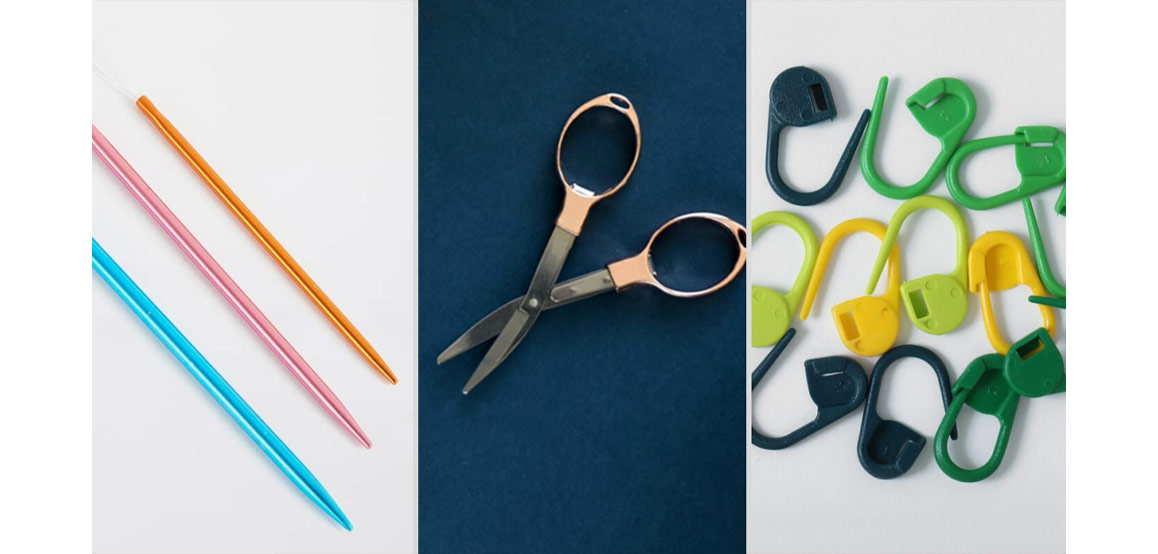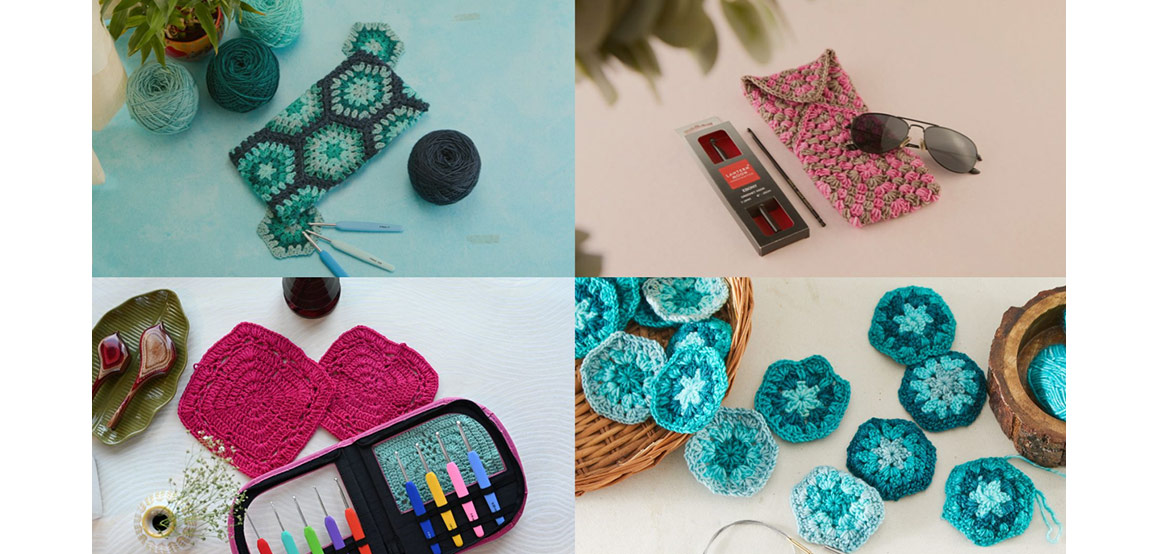Crochet Basics: The Ultimate Beginner's Guide
- Blog Views : 128
- Symfonie Yarns
- 14Oct, 2024

Are you passionate about learning a new hobby or skill? Then, learn crochet. Do you know more than fifty million people crochet or knit worldwide? But why? According to a recent online survey, crochet has many positive benefits, such as feeling happier and reduced blood pressure. Plus working with vibrant colors adds magic when you use your creativity in making beautiful projects. Through this guide, explore the basics, yarns for crochet, and tools and master the stitches to make your journey fruitful.
Let’s begin this adventure!
Crochet – Creativity and Countless Projects
Do you know the word is derived from the French word crochet and was used in the 17th century for lace-making? A crafting technique where crochet yarn is twisted together using a hook to create various clothing and accessories for home decor. In knitting, you use two needles; however, crochet only requires one hook, making it easier for some beginners to handle. You will find a range of techniques and stitches to suit your creativity.
How do you start your crochet exploration?
One of the best parts about crochet is that you don’t need many tools to start. You need two things to start your creative project:
- The joy of making crafts using your hands and the smooth flow of crochet hooks helps to create a fantastic project. These hooks' size depends on the type of yarn you are using and the desired tightness of your stitches. For beginners, we recommend a 5mm (H-8) hook.
- Yarn comes in various weights, fibers, and lengths. As you know, different patterns will recommend various yarn types. If you are looking for the perfect yarn for crochet, Merino DK is your best friend, as it is durable, breathable, and highly absorbent.
Other extra supplies you need
- Yarn needle
- Small scissor
- Stitch markers

Let’s understand the yarn labels
Yarn labels provide important information that will make your project fantastic. It includes details, like a recommended hook size, yarn weight, and care instructions. As a beginner, it’s important to follow the recommended hook size on the label. Ensure your stitches are even, and the fabric is neither too tight nor too loose.
If you want to crochet lightweight shawls, socks, or blankets, then fingering weight yarn is a good option.
Add a unique touch to your project by using hand-dyed yarn, where each skein is individually dyed, and make your item truly remarkable. For beginners, read a complete guide on yarn weight that will add extra value to your project.
How to hold the yarn and crochet hook?
To hold the yarn, loop it around your fingers to create tension allowing you to control the flow as you crochet.
Keep in mind that there are a couple of ways to hold your crochet hook. However, the two most common are:
- Knife grip: In this technique, you hold the hook, like a knife, with your thumb and index finger grasping the flat part of the hook.
- Pencil grip: It is an easy technique; everyone can do it. So, hold the hook like a pencil, using your thumb and middle finger for support.
Do practice and see yourself, which is perfect for your work. With a wool yarn for crochet, create a cute baby sweater.
How do you master basic crochet stitches?
So, you are all set with hook and yarn; now comes a favorite part for crochet lovers learning the basic stitches.
- Slip knot: A slip knot is the first step in your crochet project. Easy to create, form a loop with your favorite yarn, insert the hook into the loop, and pull through the working yarn to tighten.
- Foundation chain: The most important part of the projects. After making a slip knot, yarn over the hook and pull up a loop on the hook to create a chain stitch. Create the desired number of chains as per your project.
- Single crochet (SC): Another important but simple and versatile stitch. In this, insert your hook into the 2nd stitch pull up a loop, yarn over, and pull through the stitch. Again, yarn over and pull through both loops on the hook.
- Double Crochet (DC): The 2nd most popular stitch, creates a taller fabric and is mostly used in blankets and clothing. First, yarn over, insert the hook into a fourth stitch, yarn over again, and pull through the stitch. Yarn over once more, pull through the first two loops on the hook, yarn over again, and pull through the final two loops.
- Slip Stitch (sl st): The stitch is used to join pieces or to move across stitches without adding height to the fabric. Insert the hook into a stitch, yarn over, and pull through both the stitch and the loop on the hook in one motion.
Tips/Suggestions for Beginners
- When starting your crocheting journey, select beginner-friendly projects such as dishcloths, scarves, accessories or a simple scarf/cowls.
- Don’t worry about perfection; your stitches might be uneven, or tight in the beginning.
- It is easy to lose the count of stitches, so make sure you count stitches at the end of each row.
- Watch tutorial videos that can be incredibly helpful to beginners.

Finally, crochet is a delightful activity and opens countless possibilities. You can make practical items like blankets and hats or decorative pieces like lace and doilies. With the right tools, techniques, and regular practice, you'll soon create beautiful crochet projects.
Are you looking forward to explore more? Check out our previous posts.
What Are the Benefits of Crocheting?
The Ultimate Guide to Choosing the Best Yarn for Crochet
Happy Crafting!
-
- 14 Apr,2025
-
- 10 Apr,2025
-
- 07 Apr,2025
-
- 04 Apr,2025
-
- 01 Apr,2025
-
- 28 Mar,2025
Copyright © Symfonie Yarns 2025 - all rights reserved | RSS Feed
